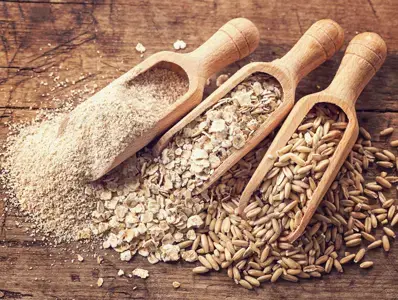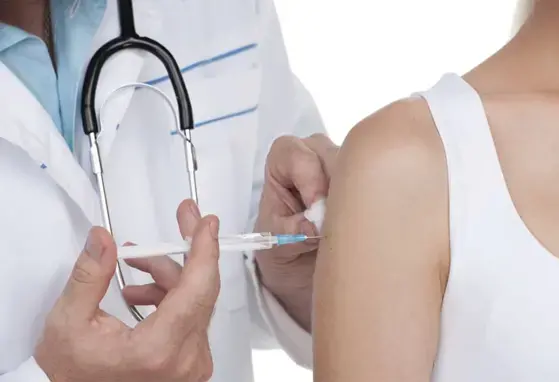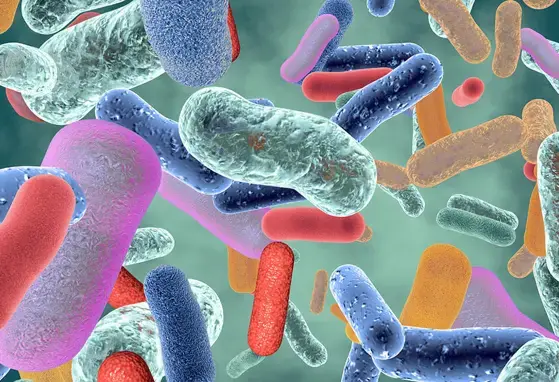Interview with Prof. Suzanne Ho – Nutrition for Midlife Women: Working towards Optimal Bone Health

Women’s nutritional requirements change as they age and experience the hormonal changes of the menopause. In this expert interview, Professor Suzanne Ho, an epidemiologist with a research focus on women’s health and aging, discusses the physiological changes associated with the menopause, along with nutritional strategies for preventing osteoporosis, with a focus on consumption of soy isoflavones.
- Hormonal changes after menopause and their physiological effects
- The roles of soy isoflavones in post-menopausal women’s health

Professor Suzanne Ho
Founding Director, Center of Research and Promotion of Women’s Health
Emeritus Professor of Public Health and Primary Care
The Chinese University of Hong Kong
- What are the different stages of the menopause and the changes that women experience during menopause?
- What is the prevalence of osteoporosis in Hong Kong?
- What are the risk factors for suboptimal bone health?
- What are the potential roles of different nutrients in bone health?
- What are soy isoflavones and what are the associated health benefits?
- What nutritional advice would you give to pre-, peri- and post-menopausal women?
- Do you have any practical tips for healthcare providers?
SH: Professor Suzanne Ho
R: Reporter
R: What are the different stages of the menopause and the changes that women experience during menopause?
SH: Natural menopause describes menopause that occurs naturally and not due to surgery or medical intervention. The menopausal status of a woman can be described as either pre-, peri-, or post-menopausal. Pre-menopausal women are those who still have menses. Peri-menopause is the period immediately prior to menopause when the physiological and clinical features of menopause begin.1 Post-menopausal women are those who have not had menses for at least 12 months.1
Menopause transition is accompanied by fluctuations in levels of oestrogen produced by the ovaries. Together with aging, menopause leads to various physiological changes including:
- A decline in bone mass and an increased risk of osteoporosis2
- A redistribution of body fat3
- An increase in cardiovascular risks such as hyperlipidaemia, diabetes and hypertension4
Mood changes, joint pain, insomnia and poor concentration are also common complaints during menopause transition.1
R: What is the prevalence of osteoporosis in Hong Kong?
SH: Osteoporosis, defined as a bone mineral density (BMD) (as measured by dual energy X-ray absorptiometry at sites such as the spine or hip) of more than 2.5 standard deviations below the mean BMD of young adults within a population, is a condition that results from bone loss and leads to an increased risk of bone fractures.2,5 It has been projected that by 2050, half of the world’s osteoporotic fractures will be in Asia.6 Studies show that the prevalence of osteoporosis of the spine in Hong Kong women aged 50–59, 60–69, 70–79 and over 80 years, respectively, is around 9%, 46%, 54% and 56%, with an overall prevalence of approximately 34% in Hong Kong women older than 50 years.7 With an increasing prevalence of osteoporosis with increasing age, and an ageing population in Hong Kong, the burden of osteoporosis is expected to rise and continue to be a major health problem.
It has been projected that by 2050, half of the world’s osteoporotic fractures will be in Asia.6
R: What are the risk factors for suboptimal bone health?
SH: Advanced age, post-menopausal status, genetics and certain medical conditions are all uncontrollable risk factors for suboptimal bone health.2 However, many environmental and lifestyle factors also contribute to bone health. Risk factors for suboptimal bone health include a low body-mass index, inadequate calcium and vitamin D intake and/or reduced exposure to sunlight, physical inactivity, smoking, and excessive alcohol intake.3,5 An unbalanced diet including inadequate protein intake and a low consumption of fruits and vegetables also contribute to poor bone health. 3,5
Interestingly, there is also a correlation between BMD and education level. In a study of post-menopausal women in Hong Kong, women with a college education had a significantly higher average BMD and a significantly lower prevalence of osteoporosis compared with women with no formal education or only a primary education.8 A higher education level was also correlated with higher dietary intakes of calcium, phosphorus, and soy and plant protein.8 The study indicated that education may be an important social determinant for the prevention of osteoporosis in Hong Kong.8
Education may be an important social determinant for the prevention of osteoporosis in Hong Kong
R: What are the potential roles of different nutrients in bone health?
SH: Together with an ideal body weight and physical activity level, a balanced diet including a sufficient intake of calcium, vitamin D and protein (but not in excess), and foods such as fruits and vegetables that are rich in vitamins and other minerals, contribute to bone health and development.8 These dietary and lifestyle factors help individuals achieve their full genetic potential for peak bone mass as young adults, as well as maintain bone mass or minimize bone loss in older age.8 A study of subjects in Hong Kong showed that increased consumption of fruits and vegetables is associated with a greater BMD, possibly via the roles of calcium, vitamin C, vitamin K, β-carotene and other carotenoids, phytoestrogens, and other phytochemicals found in fruits and vegetables (Table).3 Therefore a balanced diet is important for bone health.
Table. The potential roles of nutrients in bone health
| Nutrient | Potential role in bone health |
|---|---|
| Protein | Low protein intake may lead to inadequate production of insulin growth factor (IGF)-1, a hormone that exerts anabolic effects on bone mass5 |
| Calcium | The thickness of bone cell layers depends on calcification5 |
| Vitamin D | Vitamin D is a major regulator of calcium absorption5 |
| Vitamin C | Vitamin C may play a role in bone mass by forming various cross-links in collagen through hydroxylation of proline and lysine residues9 |
| Vitamin K | Vitamin K may fight age-related bone loss via a vitamin K-dependent mechanism of γ-carboxylation of certain proteins in bone10 |
| Phytoestrogens | Phytoestrogens may be involved in inhibiting bone resorption and stimulating bone formation by imitating oestrogen effects at the oestrogen receptors11 |
R: What are soy isoflavones and what are the associated health benefits?
SH: Soy isoflavones are a class of important phytoestrogens found in soy bean.12 Phytoestrogens are compounds with mild oestrogen-like effects and may be effective in the alleviation of oestrogen deficiency-related health problems, including suboptimal bone health, cardiovascular risks, and hormone-related cancers such as breast cancer.12-14
Population-based studies have led researchers to the hypothesis that women with higher intakes of soy have better bone health, which is now being tested in clinical trials.13 In a double-blind, randomized controlled trial, post-menopausal Chinese women in Hong Kong aged 48 to 62 years were assigned to take calcium 500 mg and vitamin D 125 IU plus either soy isoflavones 40 mg or 80 mg, or placebo.13 At 1-year follow-up, a mild but significant protective effect of soy isoflavones on the bone mineral content (BMC) of the hip bone was observed, with an average change in BMC of +0.57% in women who received soy isoflavones 80 mg, compared with -0.45% in women who received soy isoflavones 40 mg (p<0.05) and -0.17% in women who received placebo (p=0.070).13
Further analysis also found a positive correlation between intake of soy isoflavones and glycaemic control. At 1-year follow-up, the percent change in mean fasting glucose was +6.10% in women in the placebo group compared with +1.93% in women who received isoflavones 40 mg (p=0.021) and +3.53% in women who received isoflavones 80 mg (not significant).14
Moreover, a meta-analysis of prospective studies demonstrated a significant inverse association between soy isoflavone intake and risk of breast cancer incidence and recurrence in Asian populations, but not in Western populations.15
The effect of soy isoflavones on women’s health still needs further study due to the wide range of potential health outcomes, variations in study methods and different characteristics of the study populations.13,14 The effects of soy isoflavones appear to be greater in population-based studies compared with randomized controlled trials.16 Different techniques for extraction of soy isoflavones from soy may also lead to variable outcomes.16 Additionally, women’s sensitivity to the oestrogenic effects of soy isoflavones may also vary depending on their eqoul status (the ability to convert dietary soy isoflavones to equol, the most biologically active metabolite).15-17
R: What nutritional advice would you give to pre-, peri- and post-menopausal women?
SH: Bone health is a life-long issue, and bone mass is built up from a young age.5 Women of all ages should maintain a diet of whole foods that is primarily plant-based, with optimal intake of lean protein and plenty of fruits and vegetables. Women must ensure that they maintain adequate intake of calcium from low-fat dairy and plant sources. Ideally, calcium should come from food as opposed to supplements, as a very high intake of calcium is associated with adverse events.5 Women must also ensure that they acquire enough vitamin D through sunlight, food or supplementation.5
As the resting metabolic rate declines with age, and the recommended dietary intakes of certain nutrients (including calcium) increases with age5, it is even more important for older women to focus on eating nutrient-dense foods and avoid excess caloric intake leading to unhealthful weight gain.
A recent study conducted in Hong Kong suggests that consuming at least 40 mg of soy isoflavones per day would be required to experience the associated positive health benefits in healthy post-menopausal women; this may possibly be achieved through consuming at least one glass of soy milk daily and a small bowl of tofu or their equivalent.18 At present, there is not enough evidence to recommend supplementation with soy.
A recent study conducted in Hong Kong suggests that consuming at least 40 mg of soy isoflavones per day would be beneficial to experience the associated positive health benefits in healthy post-menopausal women
R: Do you have any practical tips for healthcare providers?
SH: The mid-life period is a good time for healthcare professionals to intervene in women’s health, as women approaching menopause or at menopause are entering a new physiologic phase of life. Healthcare practitioners should check for modifiable risk factors, identify specific menopause-related issues, screen for potential health problems and identify early diseases (eg, cardiovascular disease risks like dislipidaemia, high blood pressure, diabetes, etc). This period is also an opportunistic time to educate and counsel mid-life women regarding diet and lifestyle issues to lower the risks of potential health problems in the post-menopausal period.
Summary:Bone health is a lifelong concern. Adequate intakes of calcium and other nutrients like vitamins and minerals are required for bone accretion and prevention of bone loss later in life. Optimal protein intake, particularly in the elderly, is also beneficial for bone and musculoskeletal health. Evidence also suggests that soy isoflavones have potential beneficial effects on bone health as well as other hormonally related conditions like lipid profile and breast health. |
WYE-EM-329-NOV-15
Reference
- Ho SC, et al. Hong Kong Med J 2007;14:S41-43.
- Ho SC, et al. Osteoporos Int 2008;19:1785-1796.
- Chen YM, et al. Br J Nutr 2006;96:745-751.
- Strand MA, et al. FMCH 2015;3:15-22.
- World Health Organization. Prevention and management of osteoporosis. Geneva, Switzerland; 2003.
- Cooper C, et al. Osteoporos Int 1992;2:285-289.
- Ho SC, et al. Maturitas 1999;32:171-178.
- Ho SC, et al. Am J Epidemiol 2005;161:680-690.
- New SA, et al. Am J Clin Nutr 2000;71:142-151.
- Binkley NC, et al. J Nutr 1995;125:1812-1821.
- Arjmandi BH, et al. J Nutr Biochem 2002;13:130-137.
- Ho SC, et al. Menopause 2007;14:489-499.
- Chen YM, et al. J Clin Endocrinol Metab 2003;88:4740-4747.
- Ho SC, et al. Menopause 2007;14:905-912.
- Dong JY, et al. Breast Cancer Res Treat 2011;125:315-323.
- Zhan S, et al. Am J Clin Nutr 2005;81:397-408.
- Messina M, et al. Curr Opin Clin Nutr Metab Care 2004;7:649-658.
- Ho SC, et al. Hong Kong Med J 2006;12 S40-43.
If you liked this post you may also like

[Guideline Summary] S3 guidelines on allergy prevention

[Literature library] Coronavirus Disease 2019 (COVID-19) mRNA-based vaccination and breastfeeding

![[Literature Library] Epitope-Specific Response of Human Milk sIgA in COVID-19 Recovered Women](/sites/default/files/styles/card_m_mobile/public/2021-07/205_COVID-opt.jpg.webp?itok=jNfgf4cf)
[Literature Library] Epitope-Specific Response of Human Milk sIgA in COVID-19 Recovered Women